|
Printables |
PowerPoints |
Online exercises |

|
A2+-B1 Adjective + preposition + gerund 4
Learning adjective + preposition + gerund is essential for natural and fluent English. These structures are common in everyday speech, writing, and exams. They help express ideas accurately, but since prepositions don�t always follow logical rules, mastering them prevents common mistakes and improves overall communication.
Level: elementary
Age: 10-100
Type:
Downloads: 138
|
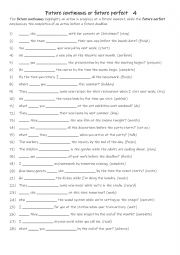
|
A2+-B1 Future continuous or future perfect 4
Understanding these tenses allows students to communicate future goals, schedules, and timelines effectively, enhancing both their speaking and writing skills for academic, professional, and everyday use. First, students need to familiarise themselves with the 2 tenses and their use. Then they read the sentences to work out which tense is needed to...
Level: elementary
Age: 9-100
Type: worksheet
Downloads: 131
|
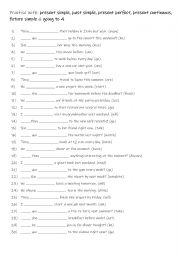
|
A2+-B1 Practise with present simple, past simple, present perfect, present continuous, future simple & going to 4
First, students need to familiarise themselves with the tenses and use. Then they read the sentences to work out which one is needed to complete the gap-fill using the infinitive in (). Each tense is used 3 times! Answers on page 2
Level: elementary
Age: 7-100
Type: worksheet
Downloads: 140
|
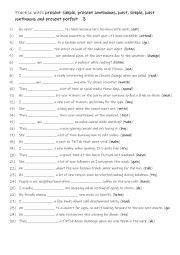
|
Practise with: present simple, present continuous, past, simple, past continuous and present perfect 3
First, students need to familiarise themselves with the 5 tenses and their use. Then they read the sentences to see which one is needed to complete the sentence using the given infinitive in (). Each tense is used 6 times! Answers on page 2.
Level: elementary
Age: 8-100
Type: worksheet
Downloads: 139
|
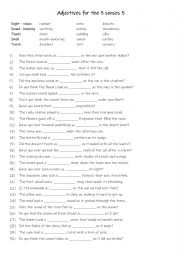
|
A2+-B1 Adjectives for the 5 senses 5
Students should learn sensory adjectives to expand their descriptive vocabulary and enhance their communication skills. These words enable vivid and engaging descriptions, bringing writing and speech to life with clarity and detail. Adjectives like "picturesque," "deafening," or "tangy" help students express nuanced observations, while emotive term...
Level: elementary
Age: 9-100
Type: worksheet
Downloads: 133
|
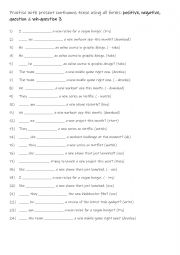
|
A1-A1+ Practise with present continuous tense using all forms positive, negative, question & wh-question 3
Each form is used 6 times! Answers on page 2.
Level: elementary
Age: 7-100
Type:
Downloads: 131
|
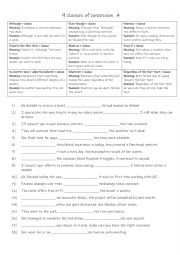
|
9 clauses of concession 4
First, students need to familiarise themselves with the 9 clauses and their meanings. Then they read the sentences to see which one is required to complete the gap-fill. Each clause is used 2 times! Answers on page 2.
Level: intermediate
Age: 10-100
Type:
Downloads: 136
|
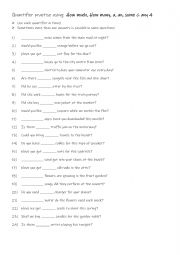
|
Quantifier practise using How much, How many, a, an, some & any 4
Students first familiarise themselves with the 6 quantifiers and their use. Then they complete the gap-fill with the correct word. Each quantifier is used 4 times! Answers on page 2.
Level: elementary
Age: 8-100
Type:
Downloads: 122
|
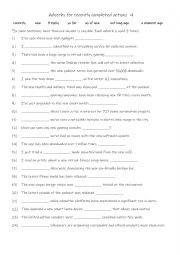
|
7 Adverbs for recently completed actions 4
First, students need to familiarise themselves with the 7 adverbs. Then they read the sentences to work out which one is needed to complete the gap-fill. Each adverb is used 3 times! Answers on page 2
Level: elementary
Age: 8-100
Type:
Downloads: 113
|
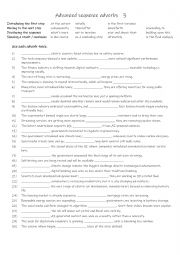
|
7 Advanced sequence adverbs 3
First, students need to familiarise themselves with the 7 adverbs. Then they read the sentences to work out which one is needed to complete the gap-fill. Each adverb is used 3 times! Answers on page 2
Level: advanced
Age: 12-100
Type:
Downloads: 130
|
|
|
|
|












